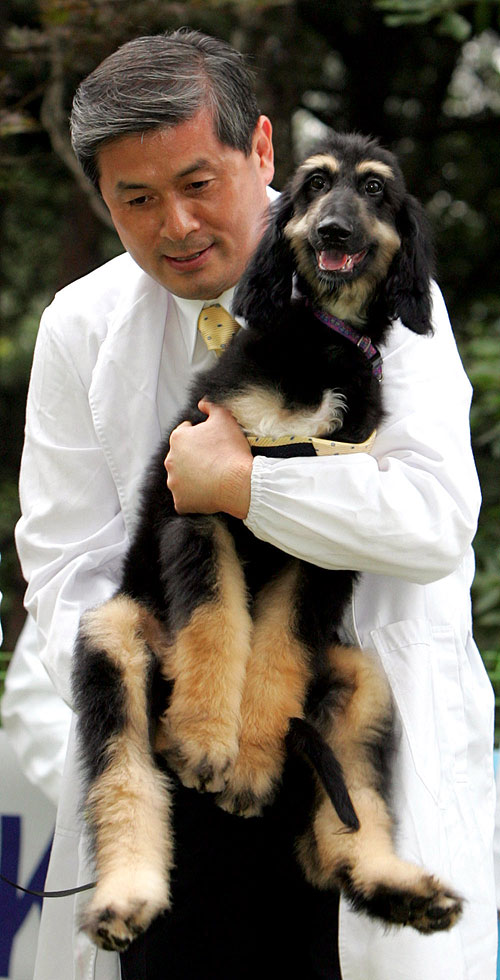Professor Schatten Did Suggest the Photographer
 Investigators at the University of Pittsburgh found no evidence that Dr. Gerald Schatten was guilty of “scientific misconduct” where that was given a very narrow definition. Unlike his colleagues in South Korea, who clearly fabricated and falsified data, there is no evidence that Schatten knowingly falsified the data. However, anyone who reads the summary report from the University of Pittsburgh will be hard pressed not to conclude that Schatten was guilty of several lesser “crimes” and that the notion of “scientific misbehavior”—however vague it is—is an apt description.
Investigators at the University of Pittsburgh found no evidence that Dr. Gerald Schatten was guilty of “scientific misconduct” where that was given a very narrow definition. Unlike his colleagues in South Korea, who clearly fabricated and falsified data, there is no evidence that Schatten knowingly falsified the data. However, anyone who reads the summary report from the University of Pittsburgh will be hard pressed not to conclude that Schatten was guilty of several lesser “crimes” and that the notion of “scientific misbehavior”—however vague it is—is an apt description.Dr. Schatten inappropriately took the title of author on the paper published in Nature that reported the creation of the first cloned dog, Snuppy. The report says that:
“we have no reason to doubt Schatten’s statement to us that his major contribution to the paper was a suggestion that a professional photographer be engaged so that Snuppy would appear with greater visual appeal. It is less clear that this contribution fully justifies co-authorship.”This is the understatement of the year. Dr. Schatten was not a contributor to that paper and took credit for work he did not do. This means he is also guilty of lying to the journal about his role.
Other problems identified include failing in his duties as the corresponding author who was coordinating the publication (he failed to show final versions of the paper to each of the co-authors which is generally required of all authors and according to the report may have contributed to the fabrication) and took credit for the work by his role as “senior corresponding author” and yet abrogated his responsibilities in that role.
The report says that Schatten took a great deal of money for activities where it was questionable that it was warranted (including $10,000 in cash that he was given right after the press conference for the Science paper) and had a great deal of financial and professional interest in this work being published and well publicized. The report also says that there were problems and logistical issues that should have raised questions for Dr. Schatten about the veracity of the claims being made. Putting these things together, one might conclude that Schatten in fact was bribed to look the other way. However, the report does not explicitly draw that conclusion—it merely points out that his payments were unseemly and points out that he was perhaps negligent in not asking certain questions.
“We feel that he did not exercise a sufficiently critical perspective as a scientist. For example, he did not ask what event in Hwang’s lab prompted the change in the reporting of some data differently in two successive versions of the same table. In another example, he reported that he was told by Dr. Hwang in the middle of January, 2005 that some contamination of the cells had occurred. Dr. Schatten’s reaction was apparently to accept Dr. Hwang’s assurance that this problem was a minor nuisance. Dr. Schatten did not extrapolate to conclude that if new cell lines had to be started in middle or late January there would not have been enough time to grow and analyze them by March 15, the date of the first manuscript submission.”
Even if there is not sufficient evidence to conclude that Schatten is not guilty of fabrication or falsification of data, it is clear that his role in this scandal highlights why it is important not to cut ethical corners. Schatten took credit for work that was not his, lied about his role to journals, equivocated to the investigative committee to avoid blame, failed to do due diligence as a scientist and an author and took money and credit to further his career in a way that made him particularly vulnerable to criticism. He may not have been the one who walked in and robbed the bank. But he was the getaway driver who did not ask why his friends wanted him to drive away when they ran out of the bank.
-David Magnus

